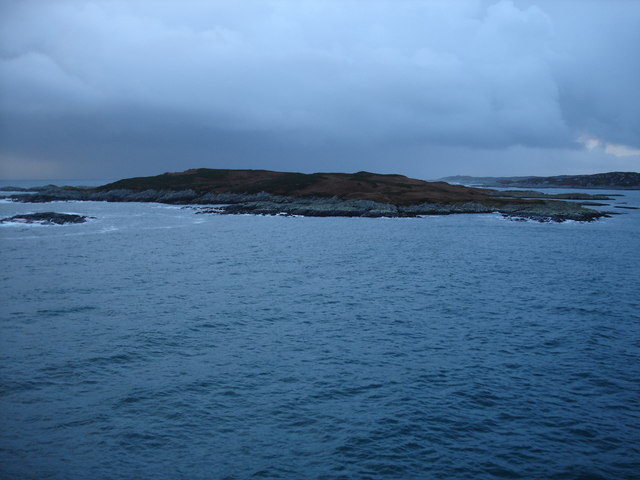Eilean Ornsay on:
[Wikipedia]
[Google]
[Amazon]
Eilean Ornsay is a rocky and uninhabited island located off the south-western coast of the 
Coll Archaeology Association: Trip to Ornsay
Uninhabited islands of Argyll and Bute Coll {{Argyll-geo-stub
Inner Hebridean
The Inner Hebrides (; Scottish Gaelic: ''Na h-Eileanan a-staigh'', "the inner isles") is an archipelago off the west coast of mainland Scotland, to the south east of the Outer Hebrides. Together these two island chains form the Hebrides, whic ...
island of Coll
Coll (; gd, Cola; sco, Coll)Mac an Tàilleir (2003) p. 31 is an island located west of the Isle of Mull in the Inner Hebrides of Scotland. Coll is known for its sandy beaches, which rise to form large sand dunes, for its corncrakes, and ...
. It is situated on the western side of Loch Eatharna and is joined to Coll at low tide
Tides are the rise and fall of sea levels caused by the combined effects of the gravitational forces exerted by the Moon (and to a much lesser extent, the Sun) and are also caused by the Earth and Moon orbiting one another.
Tide tables can ...
. Evidence of the dun
A dun is an ancient or medieval fort. In Ireland and Britain it is mainly a kind of hillfort and also a kind of Atlantic roundhouse.
Etymology
The term comes from Irish language, Irish ''dún'' or Scottish Gaelic ''dùn'' (meaning "fort"), ...
and other archaeological finds were recently discovered by a field walk on the east side of Coll.

Archaeology
The island was recently visited by members of Coll Archaeology Association Shorewatch, resulting in the discovery of evidence of several archaeological sites which had previously been unrecorded. Evidence of a possibledun
A dun is an ancient or medieval fort. In Ireland and Britain it is mainly a kind of hillfort and also a kind of Atlantic roundhouse.
Etymology
The term comes from Irish language, Irish ''dún'' or Scottish Gaelic ''dùn'' (meaning "fort"), ...
was found located at . Several examples of rock-cut basin
A rock-cut basin is a natural cylindrical depression cut into stream or river beds, often filled with water. Such plucked-bedrock pits are created by kolks; powerful vortices within the water currents which spin small boulders around, eroding out ...
s were found: one located at ; and three located at . A kelp
Kelps are large brown algae seaweeds that make up the order Laminariales. There are about 30 different genera. Despite its appearance, kelp is not a plant - it is a heterokont, a completely unrelated group of organisms.
Kelp grows in "underwat ...
kiln
A kiln is a thermally insulated chamber, a type of oven, that produces temperatures sufficient to complete some process, such as hardening, drying, or chemical changes. Kilns have been used for millennia to turn objects made from clay int ...
was found at ; a shell mound was found at ; a sheiling
A shieling is a hut or collection of huts on a seasonal pasture high in the hills, once common in wild or sparsely populated places in Scotland. Usually rectangular with a doorway on the south side and few or no windows, they were often cons ...
at ; and an enclosure
Enclosure or Inclosure is a term, used in English landownership, that refers to the appropriation of "waste" or " common land" enclosing it and by doing so depriving commoners of their rights of access and privilege. Agreements to enclose land ...
at .
References
External links
Coll Archaeology Association: Trip to Ornsay
Uninhabited islands of Argyll and Bute Coll {{Argyll-geo-stub